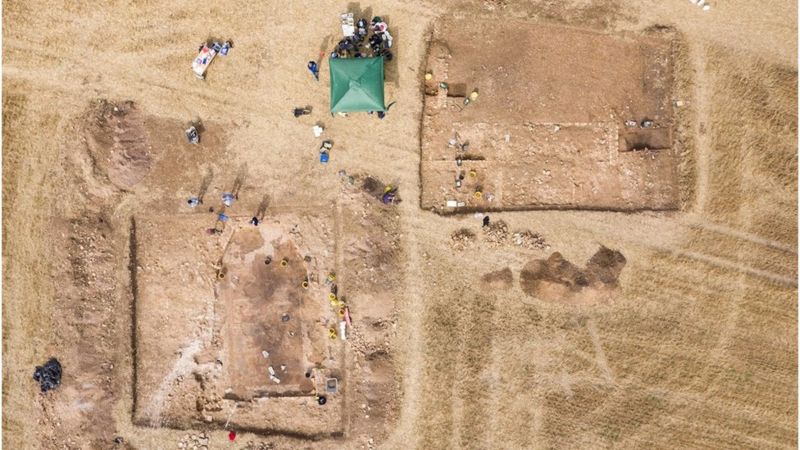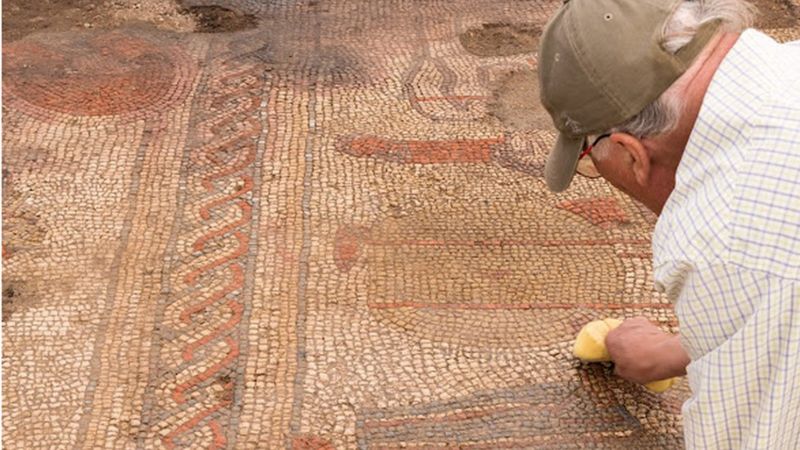
A Roman villa was discovered beneath a farmer’s field, complete with a unique mosaic depicting scenes from Homer’s Iliad. The mosaic, which was uncovered in Rutland, has been regarded as the first of its sort in the United Kingdom.
The landowner’s son uncovered it, and archaeologists from the University of Leicester researched it. The mosaic was characterised as ‘one of the most remarkable and significant ever found in Britain’ by Historic England.
On the recommendation of Historic England, the mosaic and adjoining villa complex have been designated as a Scheduled Monument by the Department for Digital, Culture, Media and Sport (DCMS).

From the late Roman period onwards, the complex is assumed to have been occupied by a wealthy individual. After noticing strange pottery during a stroll during the 2020 lockdown, Jim Irvine, the son of landowner Brian Naylor, contacted the archaeological team of Leicestershire County Council.
The University of Leicester was then given funding by Historic England to do urgent excavation work at the site. The mosaic, which covers the floor of what was considered to be the villa’s dining or gathering space, is 11m by 7m in size (36ft x 23ft).
Also Read: Four-lane Jammu-Srinagar highway by 2023, says Nitin Gadkari
Mosaics were widely utilised in private and public structures across the Roman Empire and frequently included mythological characters. The Rutland mosaic, on the other hand, is regarded to be unique in the UK since it depicts Achilles and his battle with Hector at the end of the Trojan War.

The huge estate is flanked by barns, circular constructions, and probably a bathhouse, according to investigations. Between the 3rd and 4th centuries AD, the complex was most likely occupied by someone who knew classical literature.
John Thomas, deputy director of the University of Leicester Archaeological Services and project manager on the excavations, said: ‘This is certainly the most exciting Roman mosaic discovery in the UK in the last century. It gives us fresh perspectives on the attitudes of people at the time, their links to classical literature, and it also tells us an enormous amount about the individual who commissioned this piece’.
He further added, ‘This is someone with a knowledge of the classics, who had the money to commission a piece of such detail, and it’s the very first depiction of these stories that we’ve ever found in Britain’.

The site is on private ground and is not open to the public, but Historic England said it is in talks with Rutland County Council to set up an off-site display of the villa complex and its treasures. In 2022, more excavations are planned on the site.

Post Your Comments